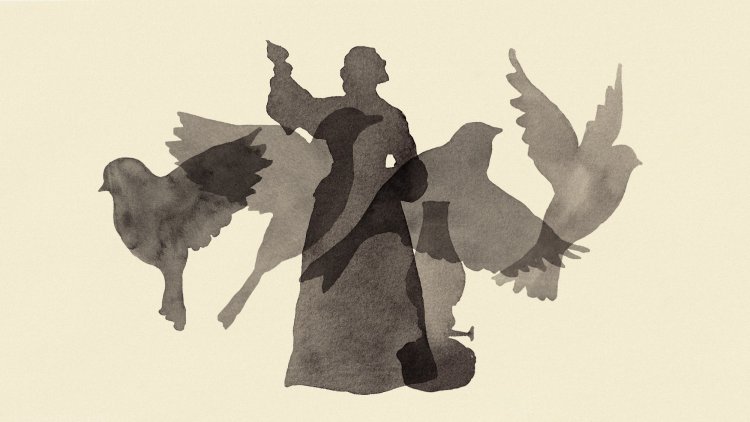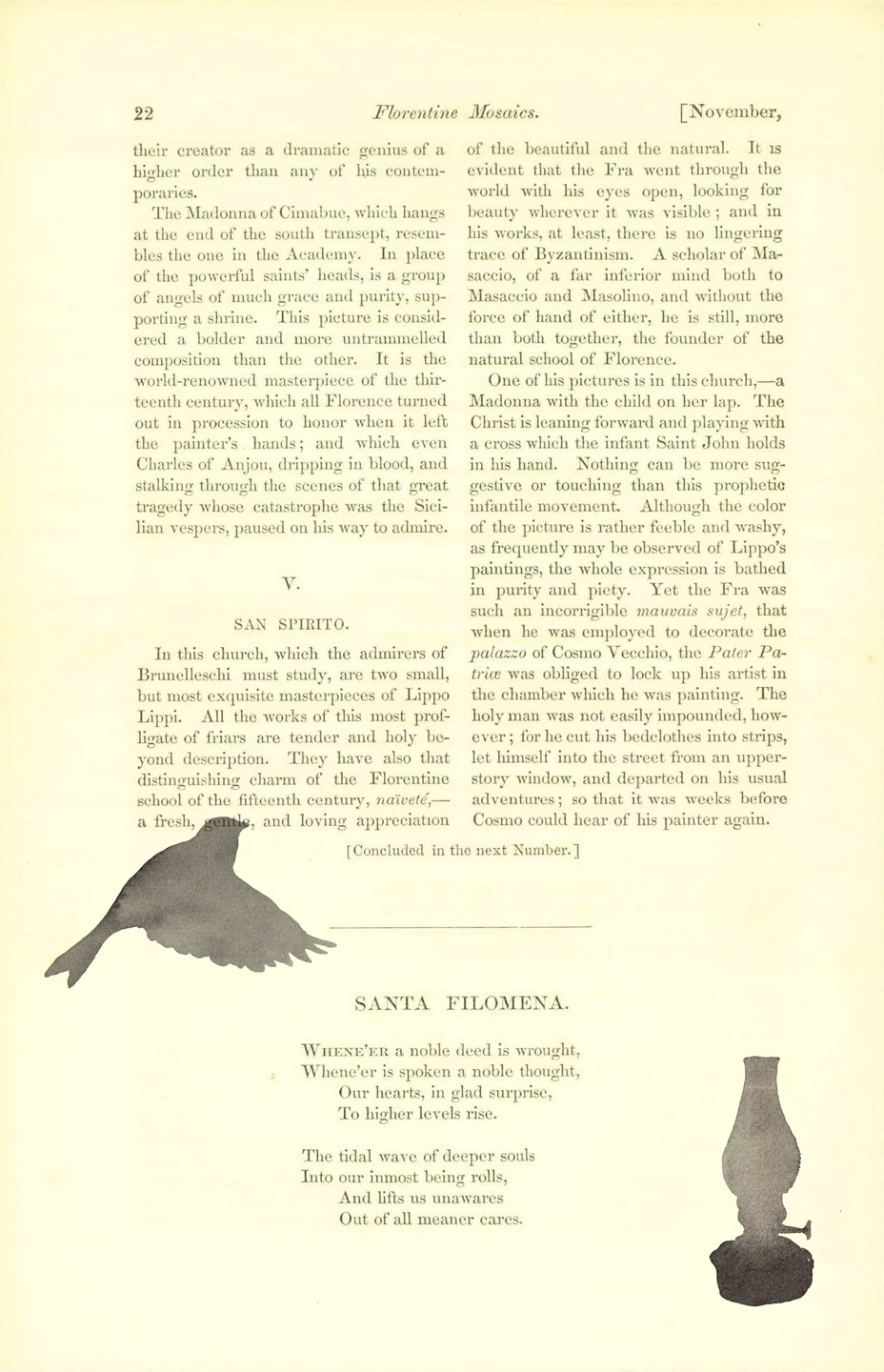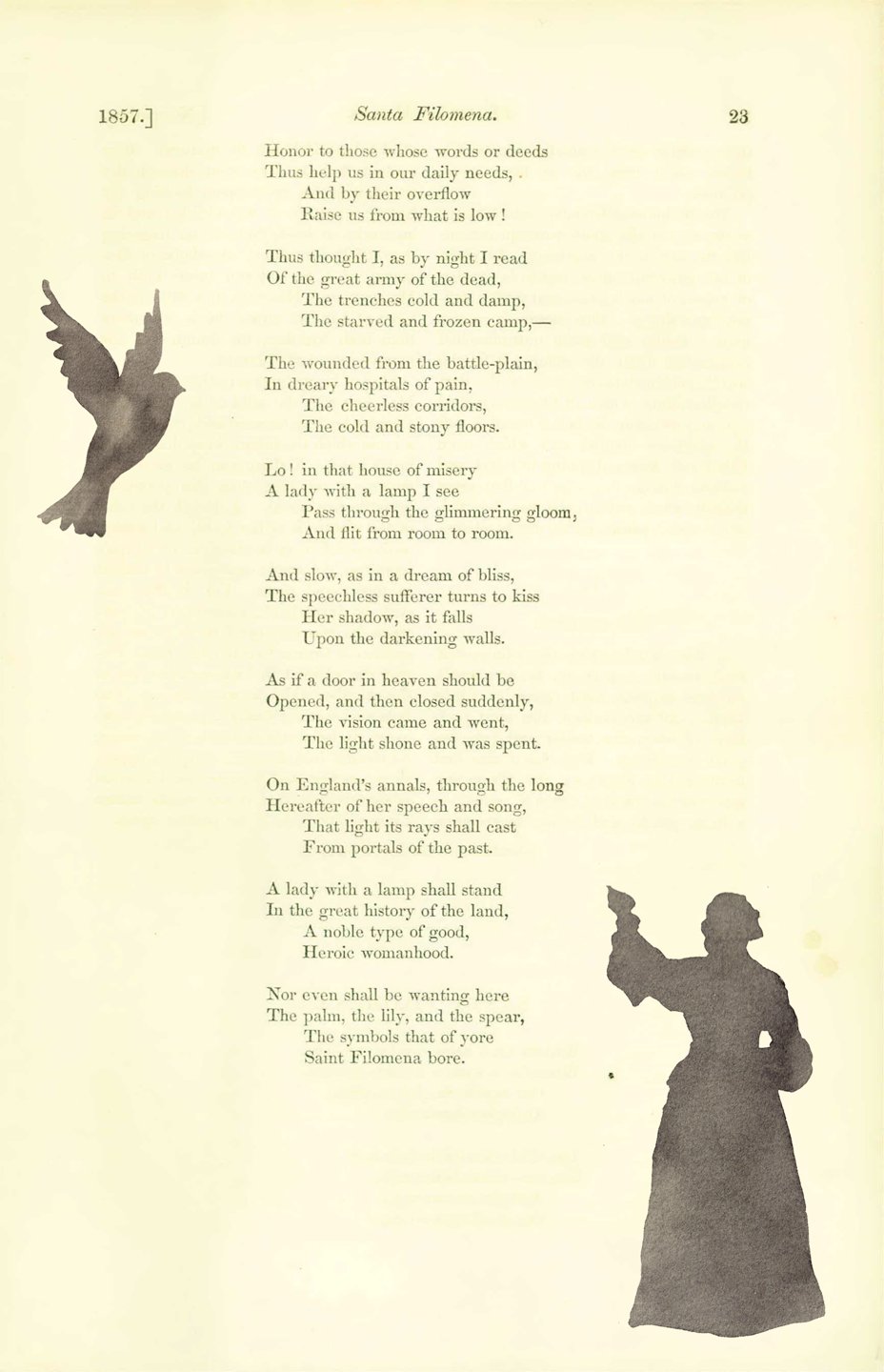Santa Filomena
A poem published in The Atlantic in 1857

Illustrations by Miki Lowe
One way to gain insight into someone’s psyche is to read what they wrote when they were 13. For Henry Wadsworth Longfellow, that’s his very first published poem, “The Battle of Lovell’s Pond,” which recognizes fallen soldiers whose “names are engraven on honor’s bright crest.” Humbly signed with just “Henry,” the poem foreshadows the sentimental but unambiguous morality for which Longfellow would become known.
“Santa Filomena,” which he wrote for The Atlantic’s inaugural issue, in November 1857, attests to his lifelong belief in the value of sacrifice. Then in his 50s, Longfellow had been a professor at Harvard and was, according to David Barber, a former poetry editor of The Atlantic, “incontestably the most celebrated poet in the land”—popular for his accessible legends. As O. B. Frothingham wrote in 1882, “The poems of Longfellow were in all households that made the smallest pretense to literary cultivation … It was poetry of the heart in its peaceful, not in its martial, moods, and it met those moods not lackadaisically, but hopefully, cheerily, bravely.”
This particular poem—the first of dozens that Longfellow would publish in the magazine—commemorates Florence Nightingale, whose service as a nurse during the Crimean War helped set standards of sanitation and patient care in the profession. Here, Longfellow canonizes her as the “lady with a lamp,” bringing the reader down hospital hallways as she pushes through the “glimmering of gloom” to tend to wounded soldiers. Longfellow suggests that Nightingale will be immortalized as an example of “Heroic womanhood,” because the light she carries will continue to cast its rays into the future “From portals of the past.”
Longfellow’s poems remain a central pillar of the American story, reminding us of the civic values that he hoped would guide and uplift each of his readers. Perhaps the source of the light referenced in “Santa Filomena” isn’t the lamp at all but, rather, Nightingale herself.
What's Your Reaction?






















